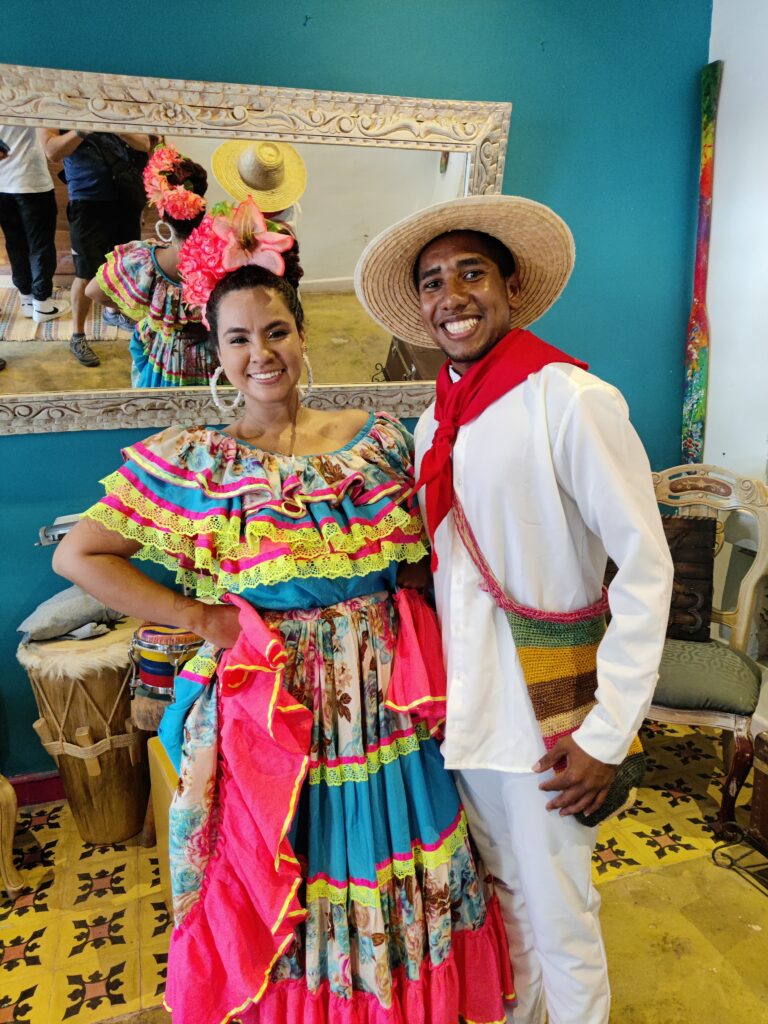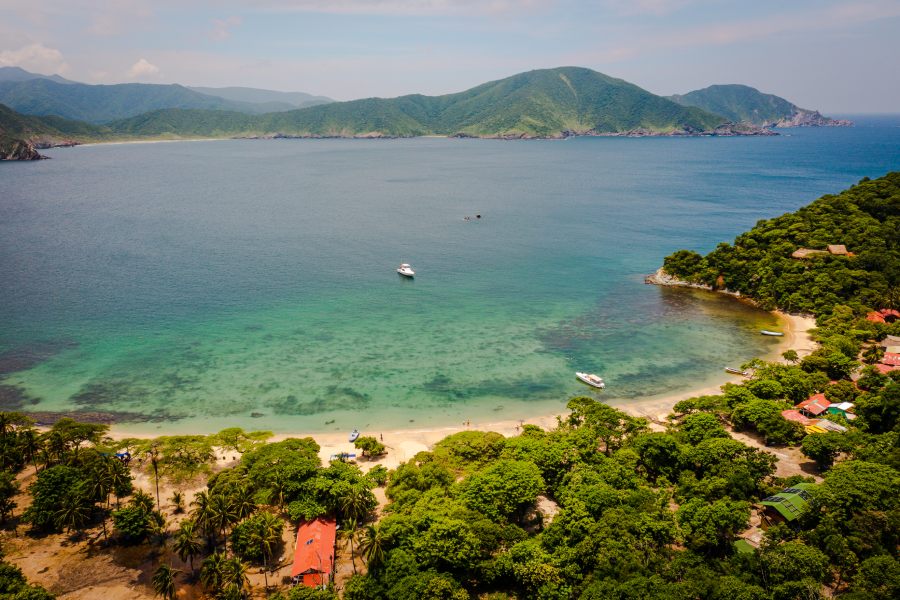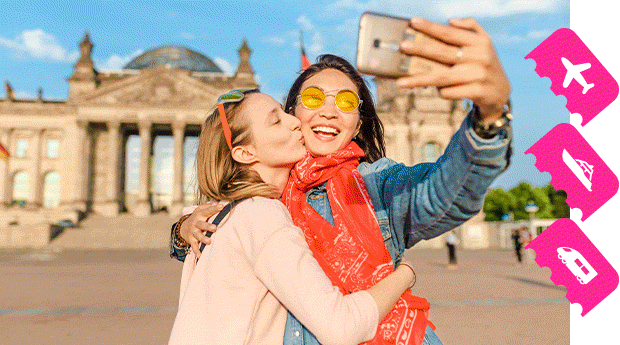Cartagena is the coastal Colombian city that gets all the attention. The historic stone walls, dating back to the 17th century. The world famous nightlife, dining and shopping. Cartagena is a hoot, but the hustle and bustle that visitors find there is not necessarily to everyone’s taste.
So I was intrigued when I was invited as an LGBTQ2S+ travel journalist to visit Santa Marta, a city about 200 kilometres up the coast from Cartagena. Beachy and historic in its own way (founded in 1525, it’s the oldest colonial settlement in Colombia), Santa Marta has been popular as a destination for Colombian nationals for decades, particularly as a seaside family vacation spot. But Santa Marta’s international profile has been growing. And like many communities in Colombia, the city of half a million has become increasingly welcoming to queer travellers.

Santa Marta’s location is certainly ideal for outdoor explorers. It’s the closest major city to Tayrona National Natural Park, a 150-square-kilometre natural treasure, which is home to some of the most pristine beaches you’ll ever find, some reachable only by water. It’s also at the foot of the Sierra Nevada de Santa Marta, one of the world’s highest coastal mountain ranges, with Pico Cristóbal Colón climbing to 5,000 metres above sea level. Visitors can spend the morning tanning and jumping waves on, say, Playa Bello Horizonte, then head up into the mountains to cool off in the eclectic town of Minca, beloved by backpackers and assorted bohemians, which has an altitude of 580 metres and a population of 800 people.
Santa Marta is also the base for the handful of licensed tour companies offering treks to La Ciudad Perdida, “The Lost City,” a hard-to-reach archaeological site that dates back to 800 CE. Sometimes compared to Machu Picchu (the location is as spectacular but the ruins are not as well preserved) it’s a trip-of-a-lifetime for serious hikers, and whether you’re doing the three-, four- or six-day version of the trek, you’re probably starting from Santa Marta. (Touring companies are required to work with local Indigenous authorities; the area is the traditional land of the Kogui, Arhuaco, Wiwa and Kankuamo peoples.)
Santa Marta is not quite as cosmopolitan as some other Colombia destinations; in fact, most Colombian holiday-makers stay at large hotels and resorts in or near a suburban resort area called Playa El Rodadero and don’t spend much time in the city proper. So I wonder: How LGBTQ+ friendly is it?
On our first expedition in the region, our group of a dozen gay male journalists and influencers hopped on a charter boat arranged by Tayneg Travel to visit some beaches in Tayrona National Natural Park. Within moments of pulling out of the Marina Santa Marta, we were zooming out into the Caribbean and up the coast toward Playa Cinto, a huge bay of crystal-clear water edged by white sand and palm trees. There were two other boatfuls of beachgoers, but the circular bay was big enough that if there had been 40 or 50 other boats, we still could have easily avoided each other. Some of us hopped on a small motorboat to head to shore while others swam in. It was very (depending on your generational references) Robinson Crusoe/Tom Hanks in “Cast Away”/“Survivor.” Although Colombia has no officially sanctioned clothing-optional beaches, Playa Cinto has a reputation for nudism—and who’s going to tell on you? Our host walked us down to a large piece of driftwood that she said marked the boundary of the clothing-optional area. A few of us doffed our trunks and stood strategically behind the driftwood for silly photos. Our host laughed at our supposed modesty.
We then cruised to Playa Cristal, a somewhat busier but equally beautiful beach, which had tarped sunscreen huts for rent, and food and drink for purchase. We frolicked in the water for a while. Back on the boat, the crew put on Madonna’s “Vogue” and suddenly there was what I can only describe as gay dancefloor and gay runway behaviour, with various members of our group busting moves and striking poses for those on shore to enjoy. No outrage from onlookers, though, admittedly, anyone who didn’t like all the camp would have had to swim out to tell us to tone it down.
Our next day’s adventure, which had been planned for us by Out in Colombia, involved altitude rather than depth. The friendly crew at Magic Tour, a company which also offers treks to La Ciudad Perdida, loaded us into four-wheel-drive vehicles for a steep ascent up, up, up to Finca La Candelaria (Antigua Vía Bonda, Kilómetro 1.8, Minca). High in the cloud forest, with colourful birds flitting here and there, the cute little farm had a viewpoint where we could gaze out off the side of the mountain and see the skyline of Santa Marta in the distance.
A cacao grower and chocolate producer, as well as a guest house, the family-run estate was a fun place to learn all about chocolate. I was worried that the proprietor Eugenio Hidalgo would make us roast and grind the cacao seeds ourselves, but all he demanded of our little troupe was that we paint our faces with a cacao paste that is supposedly good for the skin. Needless to say, we all layered the paste on thickly and hoped for the best. Beauty ritual as a bonding exercise. On the side of a mountain.
Then it was off to lunch in Minca, a bohemian mountain town and home to businesses with eco-hippy-world-peace-type names like Kakaw Orgánico Artesanal de Minca (Frente a la Estacion de Policia de Minca, Minca), the women-owned The Lazy Cat (Calle Principal #1-460, Minca), Sativa Taco y Chela (Nameless lane off Cra 5a, Minca), Amora Cocina Saludable (Carrera 5 #288, Minca) and Hotel Eco Point Minca, Bar, 4:20 (Carrera 4 #1-62, Minca)—all of which come up with the LGBTQ+-friendly designation on Google Maps. If the sound of any of those places piques your interest, you will probably want to spend three months or three years chillin’ in Minca and will want to adopt a tapir as a pet and confidant. Then you might want to spend another three years in Taganga, a fishing village on the outskirts of Santa Marta which also has a chill backpacker vibe.
Of course, the true test of an LGBTQ+-welcoming destination is the city itself. Though Santa Marta sprawls, most of its historic, cultural and nightlife venues are in the compact, well-preserved and lively colonial centre. The rather plain cathedral won’t make you swoon, but the Museo del Oro Tairona/Casa de la Aduana (Carrera 2, Parque Simón Bolívar, Comuna 2, Santa Marta), with displays on the history of gold, is worth a visit. Our group found the historic centre and waterfront fun to just wander around; at night the clubs and restaurants can be jammed. Though not as gentrified as what you’ll find within the walled city of Cartagena, there are markets, boutiques and lovely plazas in which to soak up the atmosphere. And you can see that many new boutiques and restaurants are opening up, each more on trend than the one that opened up a few months earlier.
We unfortunately missed Santa Marta’s Pride/Festival del Orgullo Diverso, which takes place in June and includes a march, sporting events and performances in the posh Teatro Santa Marta (Cl. 16 #5-10, Comuna 2, Santa Marta). The gay nightlife scene, I’m told, changes up regularly, but the city is rarely without a couple of gay bars. At the time of writing there were two LGBTQ+ nightclubs. We visited Elles Disco (Cl. 20 #3-31, Comuna 2, Santa Marta), which flies its rainbow flag right on the main street. The upstairs black-box of a bar was cranking out English and Latin dance-pop, slowly filling up after 11 p.m. It gets hot and sweaty—but there’s a terrace. There’s also Hangover Disco (Cl. 18 #2-55, Comuna 2, Santa Marta), which similarly offers hot, sweaty dance action. Though not quite a queer mecca, there’s certainly an active LGBTQ+ community in Santa Marta and lots of local queer people to meet if your Spanish is functional.
Part of Santa Marta’s (or any destination’s, really) rise in prominence is its emerging food scene. The joy of what’s happening here is that trend-setting chefs are leaning into local ingredients and borrowing from traditional cooking methods to produce very of-the-moment dishes. At Casa Magdalena (Cl. 17 #2-09, Comuna 2, Santa Marta), for example, Caribbean seafood classics get global twists (curry thai shrimp) in a bright wood-filled space that would feel as comfortable for a morning coffee as for a birthday party. At Guasimo (Cra. 2 #19-15, Comuna 2, Santa Marta), Colombian celebrity chef (and cutie) Fabian Rodriguez Reyes plates his inventions of seafood, beef, platanos, coconut and other Colombian staples like pieces of art. And his paintings brighten the elegant dining room. While the menu at Pescao (Cl. 7 #9-83, Comuna 3, Santa Marta) is more traditional, the stage at the back terrace features all kinds of performances, including folkloric music and dancing.
We stayed at Hilton Santa Marta (Cra. 2 #114 78 Sector, Pozos Colorados, Santa Marta), which is a beautifully designed, super modern “every room’s got a view” seaside property which just opened in late 2022. It’s the perfect place for a romantic escape, though about a 30-minute drive from the downtown. In the historic centre, new hotels seem to be opening up all the time including a 20-storey AC Marriott close to the marina (Cl. 23 #1C-37, Comuna 2, Santa Marta) and fashionable LGBTQ+-friendly boutique properties like Casa La Bella Samaria Hostel Boutique (Cl. 11 #4 – 06, Comuna 2, Santa Marta) and Hotel Boutique & Spa Casa de Leda (Cl. 18 #4-38, Comuna 2, Santa Marta).
Though Santa Marta may not yet be ready to win over fans of ultra-gay places Fort Lauderdale and Puerto Vallarta, it’s getting there. With its easy access to a rich variety of natural and cultural experiences, booming food scene and easygoing attitude toward LGBTQ+ visitors, it’s a place for travellers who want to boast, “I was there before everybody was talking about it.”
Editor’s note: The cost of the writer’s trip was covered by OUT in Colombia, with support from Visit Santa Marta and ProColombia, as well as Hilton Santa Marta. The sponsors of the trip did not direct or review coverage. The views expressed are the writer’s own.


